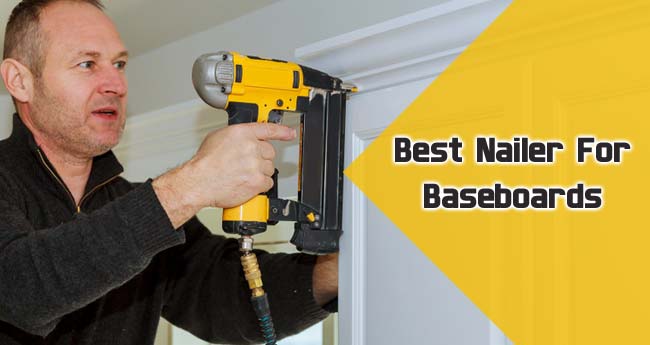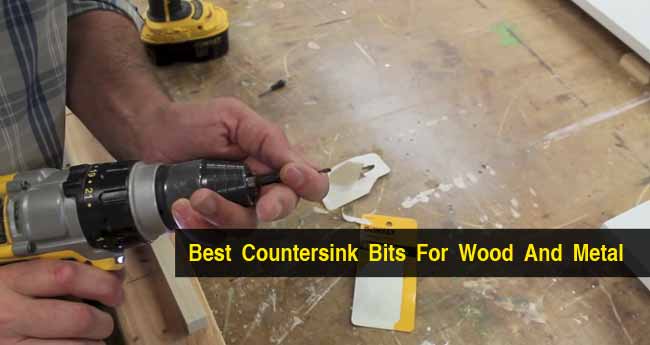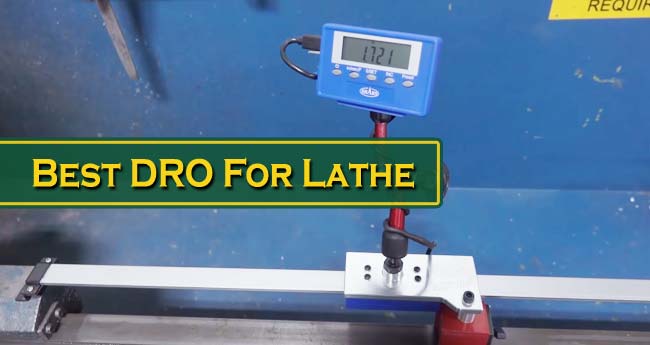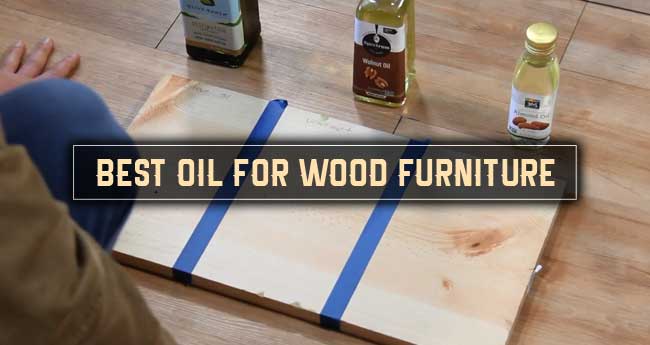Best VFD For Lathe 2025 : Top 5 Picks Reviews & Buying Guide
From controlling the rotation of the lethe AC motor to regulating the current-flow, there's no device compared to a Variable Frequency Drive. It gives you ample power to adjust, alter, and regulate the transfer of alternating current through the motor.
Being a controlling device, it can't make any mistakes. A simple malfunction on the drive may end up damaging the entire motor system - something that nobody in his worst of nightmares wants to experience.
The only solution is to sync the best VFD for lathe with the motor. It will ensure flawless current-flow and no damage to the system.
That's why, in this piece, we have come up with some of the most powerful VFD devices for you. Read till the end to discover what we have in the pack!
Image | Name | Editor's Rating | Price |
|---|---|---|---|
220V 1.5KW 2hp Variable Frequency Drive | 5 out of 5 | ||
Vector Control CNC VFD | 5 out of 5 | ||
MYSWEETY AC 220V/2.2KW 3HP 12A VFD | 4.5 out of 5 | ||
LAPOND VFD Inverter & Drive | 4 out of 5 | ||
Teco Variable Frequency Drive | 4.5 out of 5 |
Top 5 Best VFD For Lathe in 2021
It's not at all simple to set up VFD and get going with it. A VFD needs to be well-functioning, error-free, and protected against overload. Keeping most of these factors in mind, we have unearthed 5 of the most functional drives that you may want to try out today!
1. VFD 220V 1.5KW 2hp Variable Frequency Drive

Our first pick is the VFD 220V 1.5KW 2HP drive. This is a Three-Phase Asynchronous motor supported device that can be used on any such motor.
This powerful drive comes with an input voltage capacity of 220V +- 15% 50Hz/60 Hz and an output voltage of 220V. Both applicable for single or three-phase motors, of course.
The output frequency measures 0-50Hz/60Hz, which is pretty much useful if you're dealing with complex motors, as well.
A useful function of the device is the potentiometer attached to it. It's a pre-installed meter that allows you to control the motor rotation in a flexible manner. You can alter and adjust the rotation speed of the motor however you want, given that the RPM range is up to 24000.
Another reason to hanker after the drive is the easy installation system. Simply connect the input wire to the T and R terminals. Then connect the output line to the UVW terminal. At the same time, setting the VFD's HZ value to match the motor is also a vital issue.
When you're done, simply press the 'Run' key!
Highlighted Features:
- The drive comes with an extremely strong anti-jamming capacity
- Broad voltage area allows normal running in 304V-456V
- Auto voltage regulation option
- A simple PLC system allows realizing 16 legs of speed
- A potentiometer to control rotation in a flexible way
2. Vector Control CNC VFD

The Vector Control CNC drive is pretty hard to differentiate from the VFD 220V we reviewed earlier. If you have thought the VFD 220V should be the one you need to go for, Vector Control CNC may deserve a sneak-peak, too.
Similar to the previous one, this drive has an input voltage capacity of 220V +- 15% 50Hz/60 Hz. The output voltage is 220V, and this is for a three-phase motor only.
As for the output frequency, the range is 0-50Hz/60Hz. Even if you're working with an advanced motor, it should work pretty much fine with it.
You can take advantage of the pre-installed potentiometer in the device. The meter makes it extremely easy to control the rotation of the AC motor, giving you the complete flexibility you need.
Keeping the VFD cool while in operation is doubtlessly the most important factor if you're looking for long-term support from it. That's why this device has an aluminum base that is equipped with a cooling fan.
This cools down the heat inside the VFD and brings down the temperature to a soothing cool level. Hence, you get a stable operation from the drive as you deserve.
Lastly, it comes with a simple and easy installation process. Connecting the T and R terminal with the input wire and the UVW terminal to the output line is all you need to do to get this thing going. Make sure you set the HZ value of the drive to the level that matches the motor, too.
Highlighted Features:
- Drive applicable to three-phases motor
- 10 HP machine with 7.5 KW power
- Comes with a cooling fan for keeping the temperature cool inside
- Adjustable Carrier by 16KHZ
- Completely soundless operation
3. MYSWEETY AC 220V/2.2KW 3HP 12A VFD

When it comes to a user interface, there's simply no competition to the Myswefty AC 220V VFD if you truly need the best VFD for lathe. It comes with one of the most simple and easy user-interfaces we have ever used. The user-friendly operation panel makes it pretty simple to use for any user - experienced or novice.
Apart from the easy-to-use operation panel, one thing that can describe this drive is its protection system. You can't really rely less on this device as it comes with multiple protection systems.
It's functional overheating, overloading; overvoltage systems make sure that the device doesn't crash due to the heating, loading, and voltage problem. Similarly, it takes care of the machine when it comes to dealing with the low-voltage issue, as well.
Inside the device, you have a strong anti-jamming capacity to ensure it's not going to leave your job out there in the middle of nowhere. No matter how long you're running it, forget about jamming.
Another impressive feature it comes with is the DC cooling fan support in it. It makes sure that the machine doesn't make a lot of sounds when it is operating. So enjoy a noise-free operation all day long.
Highlighted Features:
- Protective measure for overheat, overcurrent, and overload
- 2.54 mm bar connector
- Anti-paint protection lengthens the lifespan
- Anti-jamming capability
- Fast start and stop response for fast performance
4. LAPOND VFD Inverter & Drive

If you're only up for the best VFD for wood lathe, you have to look at the Lapond VFD inverter and drive. It's innovative, it's powerful, and it's impressively functional.
Starting with the high startup torque of this machine, you can expect the device to work great on low-speed stability. Even if you're operating this drive at low-speed, you can rest assured that the VFD is going to perform in the same manner as its usual capacity.
Equipped with the advanced calculus PID closed-loop arithmetic, the device provides a quick responding speed while in operation. Whether you're starting the machine or stop, expect no lagging whatsoever.
Its six unique protections system is simply mind blowing. This VFD provides protection from overcurrent, underphase, overheating, overloading, overvoltage, and undervoltage at the same time. Thanks to its unique design and capacity, it can perform well in all these cases.
The device houses a well-controlled cooling fan inside to make sure that it makes an impressively low sound while in full operation. This is really appreciating from such a complex device.
Being such a smart device, the VFD supports a number of encoders to sync with it. Various encoders like open-collector, differential, resolver, and UVW can be easily synced and operated with it.
Highlighted Features:
- High startup torque and impressive low-speed stability
- Easy PLC system allows realizing 16-legs of speed control function
- Broad voltage working area
- Six different functional protection system
- Compatible with different encoder systems for better performance
5. Teco Variable Frequency Drive

Finally, we have the Teco VFD as our finalist. This compact device serves both purposes of being a smaller machine and a powerful VFD.
Controlling the overload of current is one of the key functions that you can't miss in any VFD machine. Teco VFD is not going to frustrate us in this regard. With its advanced overloading protection system, it can control up to 150% direct current quite efficiently.
Again, using a highly functional capacitor switch, the machine can prevent a current leak. This saves the entire system from accidents and malfunction, which, in turn, protects the device and motor from damage.
You can find that the device has a quick parameter configuration technique coupled with a complete diagnostic feature. This way, the Teco VFD can be connected to software that gives you the option to control and monitor the performance and operation of the machine from an online platform.
On the plus side, the machine comes with a cool and bright LED screen to take all the readings you need. Its 5-digit bright LED screen makes sure you don't miss any reading for blurry or unclear projection.
Highlighted Features:
- Compact small-sized VFD machine
- Controls 150% DC overload
- Bright and clear 5-Digit LED reading screen
- Current leakage prevention system
- Quick parameter configuration technique
Top VFD for Lathe Comparison Chart
Image | Name | Anti-Jamming Capacity | Voltage Regulation Option | Works On |
|---|---|---|---|---|
 | VFD 220V 1.5KW 2hp | Yes | Voltage Regulator | Three-Phase Motor Only |
 | Vector Control CNC VFD | Yes | Voltage Regulator | Three-Phase Motor Only |
 | MYSWEETY AC 220V/2.2KW | No | Protection For Overvoltage | Three-Phase Motor And Others |
 | LAPOND VFD Inverter & Drive | No | Protection For Overvoltage | Three-Phase Motor Only |
 | Teco Variable Frequency Drive | No | Only Protection For Overload | Both One Phase And Three Phase Motors |
VFD for Wood Lathe Buying guide
So, you're genuinely after the right VFD for lathe, right? Well, as we have discussed 5 of the best options you can go for, it is now easier for you to decide which one to go for. But before you hit the 'Buy Now' button, here're some pro-tips that will come in handy for you to take your final decision!
High Voltage Or Low Voltage?
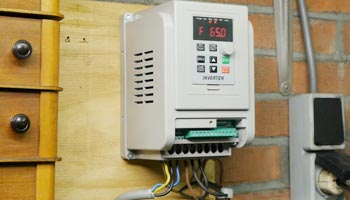
The first question you need to answer is the voltage capacity of the device. Do you need a high voltage or a low voltage VFD? Simply put, you are using a high-voltage VFD; it will easily distribute your load.
On the other hand, a low-voltage one would have a hard time distributing the load. But then again, it depends on what type of lathe you are using it for.
On a different note, you need to confirm what type of inverter you need. Whether it's the single-phase or three-phase motor, you're required to use it. This makes it a lot easier to decide on the voltage requirement, as well.
Overload Protection
It's not an alien idea that the VFD devices can get damaged due to overloading of current, phase, heat, and voltage. So having built-in protection for these overloading issues may save the drive from damage, and at the same time, protect the motor from any adverse issues, too.
There are some drives in the market that come with 360-degree protection from overheating, overphase, overload, and overvoltage. Plus, these devices also protect the machine from under voltage and underphase, as well.
It's best if you can go for such devices if you can.
Fast Response
Another crucial function of a VFD machine is the fast response to the start and stop command. In the case of such a vital device, it is extremely important that the drive responds to the commands in an immediate manner.
That means you won't have much time in your hand in emergency situations when you need a motor to stop or immediately control the flow of electricity. That fully depends on the functionality of the drive.
So make sure you're looking for a VFD that can immediately react upon the commands you put in it. It will make your controlling task easier and safer.
Anti-Jamming
Jamming is another issue that you may not want to come across. It's really going to make it miserable for the device to operate. Thanks to modern technology, you don't need to worry much about jamming anymore.
Most advanced devices come with a built-in anti-jamming technique that prevents any jamming from hampering the operation. You should check on that.
User Interface
It's not that an expert is always going to operate the drive. You may need some novice operators to take hold of the device, as well. So a user-friendly interface and display may help greatly in this regard. So count that part in, as well.
Frequently Asked Questions
Q1. How do I size a VFD for a Motor?
Ans. You should always size the VFD according to the voltage and current of the motor. Never try to resize it according to the Horsepower.
Q2. Does a VFD Work on a 3-Phase 3 Horsepower Motor?
Ans. Generally speaking, if you have a 230 volts 3-Phase, 3-HP motor, it should work with the VFD.
Q3. Can a VFD be Used for a Manual Lathe?
Ans. Yes, a VFD can easily be used for a manual wood lathe, as well.
Q4. How Much does a VFD Weigh?
Ans. Although there are many versions of VFD machines depending on the manufacturers, a regular VFD may measure around 5 to 6 pounds.
Q5. What Type of Motor is Used with a VFD?
Ans. VFD is used with an AC motor. Most preferably, the AC motor is three-phased.
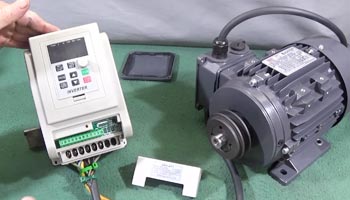
Conclusion
Working with sensitive lathe AC motors can be challenging if you don't have the best VFD for lathe. It makes sure that the motor syncs perfectly with the drive, and it can be easily controlled in case of rotation and current-flow.
If you have been wondering which one is the most functional of all the VFDs we see in the stores, we believe this piece will guide you on a great deal. Try sticking to the buying guide here to get the best VFD possible!
You Might Want to Read:
- How to Choose Wood Filament: A Complete Guide - July 17, 2021
- 10 Best Propane Forge Reviews - June 30, 2021
- Best Circular Saw Blade for Plywood : Top 10 Picks - June 30, 2021






